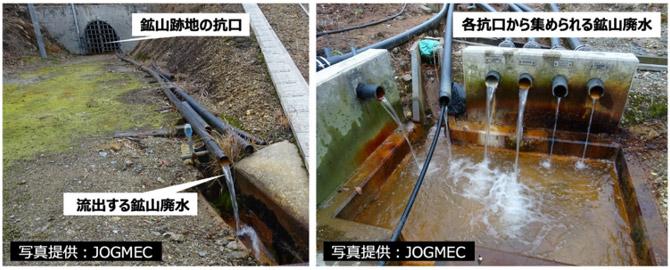Purification of heavy metal wastewater with rice husks, rice bran and microorganisms
With the aim of identifying important microorganisms in the equipment and optimizing the operating conditions of the equipment, JOGMEC's mine wastewater treatment equipment was operated for more than 200 days under seven different conditions (Fig. 2), and its treatment performance was evaluated. and the bacterial lawn in the device.
Fig.2 Operating conditions of mine wastewater treatment equipment
As an operating condition to be optimized, we focused on the necessity of a preparation period before operating the equipment. Since sulfate-reducing bacteria are active under anaerobic conditions, in the water treatment method using sulfate-reducing bacteria, it is common to leave the apparatus stationary for several weeks before starting treatment to create an anaerobic environment inside. However, this preparatory period has the disadvantage that water treatment cannot be performed, and the need for a preparatory period has not been considered.
First, we compared the condition with a conventional preparatory period (Condition 4 in Fig. 2) and the condition in which mine wastewater treatment is started from the beginning without any preparatory period (Condition 3). As a result, the number of sulfate-reducing bacteria increased in the device under all conditions, indicating that the device had the ability to remove heavy metals for more than 200 days (Fig. 3). From this, it was found that, at least under the conditions tested this time, the preparatory period before operation can be omitted, and the start of treatment can be brought forward by several weeks.
Fig. 3 Impact on water treatment performance with or without operation preparation period

Next, we focused on the velocity of the mine wastewater flowing into the device. The slower the inflow velocity, the more time it takes to treat the wastewater, and the more stable the performance of the device. On the other hand, the faster the inflow speed, the more wastewater can be treated in a certain period of time. Therefore, when we compared multiple conditions with different inflow velocities (Conditions 1 to 4 and 7 in Fig. 2), we found that under the condition with the fastest inflow velocity (Condition 7), the heavy metal removal performance decreased around the 200th day of operation. bottom.
When we examined the bacterial flora to clarify the cause, we found that sulfate-reducing bacteria A (Desulforegula sp.) increased under the conditions where the wastewater flow rate was the fastest (Fig. 4 middle, sulfate-reducing bacteria A). Examination of this sulfate-reducing bacterium A revealed that it has the unique property of using only organic matter that has not been decomposed as a nutrient source. If the flow rate is too fast, there will not be enough time for the degrading bacteria to decompose the rice bran in the device, and insufficiently decomposed organic matter will accumulate in the device, which is thought to have increased the number of sulfate-reducing bacteria A (Fig. 4, left). ). In addition, many other sulfate-reducing bacteria prefer low-molecular-weight organic substances that have undergone advanced decomposition, so it is thought that such an environment was not suitable for their growth.
On the other hand, sulfate-reducing bacterium B (Desulfosporosinus sp.) was abundant under other conditions. In general, sulfate-reducing bacteria prefer an anaerobic environment, and under aerobic conditions in the presence of oxygen, their activity is significantly reduced or they cannot grow. This sulfate-reducing bacterium B proliferated not only under high anaerobic conditions but also under low anaerobic conditions. In this way, sulfate-reducing bacteria B, which are resistant to environmental changes, are the key microorganisms for mine wastewater treatment equipment, and it is important to maintain a large amount of these microorganisms in order to stably maintain treatment performance. I found out.
On the other hand, under the condition of high flow velocity, sulfate-reducing bacteria A increased due to the accumulation of organic substances that had not been decomposed. When the degree decreased, the heavy metal removal performance could not be maintained (Fig. 4, right).
Furthermore, we compared and examined the amount of rice bran as a nutrient added to the equipment, and optimized the operating conditions. Specifically, we compared three conditions in which the amount of rice bran added to the device was different (conditions 4 to 6 in Fig. 2), and clarified the amount of rice bran required for operation over 200 days.
Fig. 4: Water treatment performance degradation mechanism when mine wastewater inflow rate is high
In a mine wastewater treatment system, long-term stable operation can be expected if the types of sulfate-reducing bacteria in the system can be controlled.
In addition, in this research, we treated heavy metals in mine wastewater, but heavy metals are also contained in industrial wastewater such as factory wastewater in various manufacturing industries. JOGMEC's mine wastewater treatment equipment is a low-cost, low-environmental-impact technology that treats heavy metals with rice husks, rice bran, and microorganisms, and is expected to be applied to industrial wastewater treatment.
